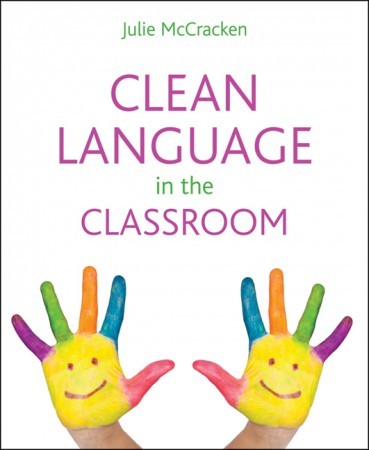Clean Language in the Classroom, a New Book by Julie McCracken, Crown House Publishing
Crown House Publishing

Clean Language in the Classroom by Julie McCracken introduces teachers to an innovative, yet simple, approach to supporting learning. Using modelling and questioning techniques, Clean Language seeks to minimise miscommunication and misconceptions and create deep, personalised learning experiences for each child. It helps both teacher and learners think about their own thinking and learning. This child-centred approach means the teacher is supporting and facilitating, rather than leading the learning, which also builds a supportive learning culture across whole classes. It encourages children, teachers and parents to respect others and their needs.
Clean Language is founded on listening and a particular kind of questioning. Clean questions are formed by taking a person’s words and blending them with a neutral question, which has been designed so as not to assume or elicit the answer. Written by Julie McCracken, a real teacher with extensive experience of using these approaches with her classes, this book provides a comprehensive guide to using Clean Language techniques in the classroom. It gives teachers the tools to use Clean Language in their classrooms, including detailed step-by-step instructions, effective questioning and modelling techniques, and case studies.
The benefits of the clean approach include: improved communication; improved attainment; a supportive, collaborative classroom culture; and self-motivated, independent, reflective learners. Clean Language raises awareness of one’s own thought processes and those of others. Clean Language can facilitate learning by helping individuals to explore their own mindsets, learning needs and metacognitive processes. It can also encourage respect, diversity and inclusive practice by helping classes to understand each other’s learning needs.
The book details how to incorporate Clean Language into curriculum areas such as speaking and listening, writing, reading, PE, art, maths, science and domains such as thinking skills, behaviour management, confidence, SEN, collaborative classroom culture and test performance. The examples used in the book come mainly from a primary context, but the content is applicable to secondary settings as well. It is written primarily with classroom teachers in mind, but will also appeal to teaching assistants, learning mentors and leaders, indeed, anyone who is responsible for and interested in effective learning.
"Teachers work hard to develop independent and collaborative learning environments and know well the benefits for children. A clean approach can amplify these benefits. On the face of it clean questions are just questions – and simple ones at that – but this belies the depth of thinking and reflection your pupils will experience when you use them."
From the Introduction to Clean Language in the Classroom by Julie McCracken
So what is Clean Language?
Clean Language is …
- A set of questions and a particular way of asking them, which directs attention without confining it, limiting it or leading it
- An extremely receptive way of listening, which remains (as far as possible) free from assumptions, suppositions, presuppositions, opinions and judgements
Clean Language helps …
- Teachers facilitate children's thinking, without interfering with it
- Children to become more aware of both what they think and how they think
- Children learn to think
Clean Language promotes …
- Cognitive and emotional development
- Raised awareness
- An appreciation of diversity
- Respect for self and others
- Self-efficacy
Clean Language supports teachers as facilitators of learning. Facilitating is not about transmitting content. Content is developed through the reflections and actions of learner(s), while learning facilitators influence to establish the climates conducive to this learning.
"A practical and methodological guide to a pedagogical approach which is capable of producing incredible outcomes; not just academically, but in terms of the development of the whole child."
Helen Mulley, editor, Teach Secondary
"Julie McCracken proves that a careful, subtle and humane approach to understanding what is going on in children’s heads is not only possible but highly desirable."
Ian Gilbert, founder, Independent Thinking



|